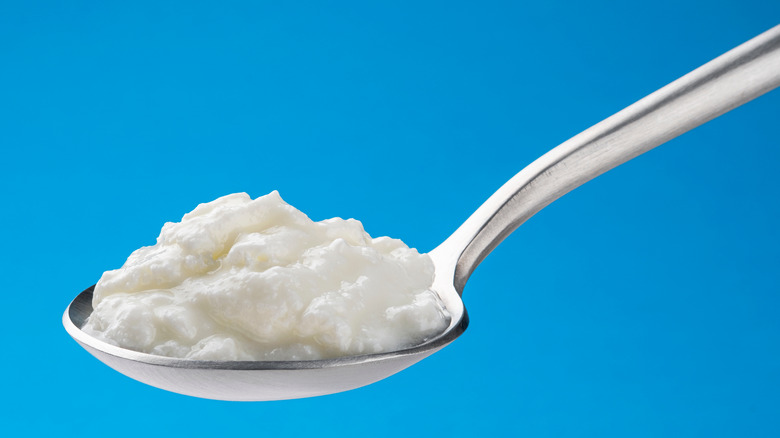Is It Really Dangerous To Mix Milk And Pineapple?
Rumors circulating on blogs and social media have been claiming that mixing milk and pineapple can be dangerous — but can this unusual combination really harm your health? Despite the myth, however, there is no scientific evidence to suggest that mixing pineapple and milk is dangerous or even deadly (via Healthline). Whether the two foods are consumed on their own or together, milk and pineapple are not deadly or poisonous, nor does eating them lead to nausea, diarrhea, or abdominal pain, as some rumors have claimed.
According to one study published in the Bangabandhu Sheikh Mujib Medical University Journal, researchers assessed the toxic interaction of milk and pineapple in rats and found that consuming the two foods at the same is perfectly harmless and safe. The rats that were given the mixture didn't experience food toxicity or die. In fact, they reacted no differently than the rats in the control group. However, that doesn't mean that mixing milk and pineapple will result in absolutely no interaction at all.
Pineapple can curdle milk
As it turns out, mixing milk and pineapple may cause your milk to curdle and turn bitter. This is because of the way the two foods' chemical compositions interact with one another. "Pineapple contains bromelain, which is an enzyme, or a type of protein that has chemical activity, and it can break down animal proteins," Dr. Christopher Loss, the Louis Pasteur lecturer at Cornell University, told EatingWell.
Bromelain breaks down casein, the major protein in milk, which can lead to smaller pieces of proteins that may have a bitter taste. While there might be other enzymes in pineapple interacting with the casein in milk and causing it to curdle, bromelain is the primary and major contributing factor at play. Fortunately, you can try to avoid this from happening by heating or cooking the pineapple beforehand. "The heat will denature the bromelain enzyme, rendering it inactive," Dr. Loss said. You can also use canned pineapple instead, which has already been heat-processed.


